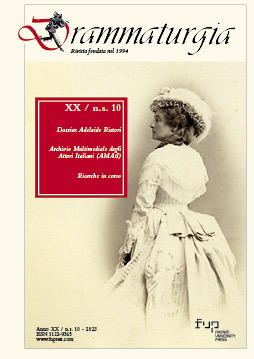Pubblicato 2023-12-22
Parole chiave
- Scaramuccia,
- Painting,
- Bambocciate,
- Rome,
- Charlatans
Come citare
Copyright (c) 2023 Natalia Gozzano

TQuesto lavoro è fornito con la licenza Creative Commons Attribuzione 4.0 Internazionale.
Abstract
In the Museo di Roma at Palazzo Braschi there is a painting attributed to an anonymous Flemish painter of the 17th century depicting a theatre scene in Piazza Pasquino, whose iconography differs from the usual depiction of this subject spread by bamboozling painters in the 17th century.
Instead of being crowded at the foot of a raised stage – as was typical in works depicting charlatans accompanied by the comedians of the Commedia dell’arte – the spectators are arranged in a circle around them. And, above all, the character in the centre of the scene has the physiognomy and costume typical of the actor Tiberio Fiorilli (1608-1694) as Scaramuccia. This identification is based on iconographic comparisons with printed works and two paintings by Pietro Paolini.
Fiorilli’s presence in Rome and the social context in which he is documented are intertwined with the history of the urban space depicted in the painting, taking into account architectural, iconographic, and literary elements. On the basis of these elements, the work can be dated to between the 1630s and 1640s, a little-known period in Fiorilli’s life. Before conquering the stages frequented by the aristocracy and kings, the young actor may have begun to build his character in the street theatre made up of Commedia dell’Arte masks and charlatans with which the city was teeming.

